Namibia in Photos Part 1: Etosha animals
Last week, Kelli and I wrapped up 11 wonderful days road-tripping through Namibia. We rented a high-clearance 2WD SUV that had a bed in the back, stocked up on food, and hit the road.
The plan was to spend three nights in Etosha National Park for some wildlife viewing before heading towards the Skeleton Coast and the German coastal town of Swakopmund. We’d eventually make our way to the famous dunes of Sossusvlei and from there, back to Windhoek for our flight to Angola.
We took lots of photographs—probably about 1500 between the two of us. So rather than bore you to death, I’ve tried to pick a few of my favorites and will create various posts over the coming days, each focusing on a particular section or theme. I’ll do my best to keep things short and sweet.
I’m sure Kelli will also be posting some photos on her blog and on Facebook, and I might post more on FB, too. So keep an eye out. If you’re not on the Facebook, I’ll add some links once everything is up.
I’m not sure if these photos can really communicate how great this trip was for the both of us … a much needed respite from our hectic life in Cabinda. This sort of trip reminds us of why we live in Africa.
Part 1: Animals of Etosha National Park
Along with the Sossusvlei dunes to the south, Etosha National Park is the main tourist attraction of Namibia. An enclosed area about the size of New Jersey, Etosha is overflowing with wildlife. During the dry season from July through September (winter), animals make their way en masse to the waterholes throughout the park.
A well-maintained network of dirt roads criss-cross the southern portion of the park, leading drivers to a series of waterholes. In terms of animals, the park is really pretty incredible. Serious wild kingdom stuff.
We went from east to west, camping the first night at Namutoni, then to Halali and finally Okaukuejo (see map), and were lucky enough to see most of the big attractions: elephant, lion, giraffe, zebra and scores of game animals. We missed any cheetah or leopards, but so it goes …
Anyway, if you’re ever considering doing a safari, I HIGHLY recommend Etosha. It was almost too easy.
Photos in chronological order. Click on any photo to go into a slideshow viewer where you can comment / navigate.
- Our first animal spotting: the Black Rhino. The black rhino’s name is a misnomer. A black rhino’s distinction is in the shape of its lips – more pointy for eating foliage, or in this case, thorny-ass bushes.
- The elusive Damara Dik-Dik: wins Best Name Award for Etosha. (Kind of hard to see, but on right behind bush.)
- Black-faced impala: Widespread in the park.
- Zebras: These two were part of the first large herd we saw in the park. They were all over the place.
- Barbershop quartet of giraffes. We couldn’t get enough of ’em.
- Chudob watering hole: Black-faced impala (left) and oryx (aka gemsbok) take a sip.
- Zebra, kudu (grey with horns; center, left) and giraffe join in on the action.
- Ngobib waterhole: Kelli and I were all alone at this watering hole. We spent over 20 magical minutes with this elephant …
- Drinking deeply.
- An older friend came and joined for a drink.
- Many photos were taken
- Okerfontein: It was an afternoon spent with lots of elephants. You can see the Etosha salt pan in the background.
- Blue wildebeests: Not the most photogenic creatures.
- Red hartebeest: Another beautiful game animal.
- Start of the second morning. This giraffe was out for a b’fast drink. Giraffes are rather ungainly sippers.
- There was a huge herd of zebras that spread out for as far as the eye could see.
- Aus Waterhole: Kudu spooked by something. Later we guessed that maybe they smelled a lion. All the animals seemed agitated.
- Fitting to find an elephant at Olifantsbad.
- Gamsbokvlakte: A family at this man-made waterhole.
- Gamsbokvlakte: Small but popular waterhole.
- The entire family was there.
- Springbok: Small and beautiful … kind of like the whitetail deer of the park.
- Apparently oryx and ostriches don’t have any interest in one another.
- Heading out to the famous Okaukuejo waterhole. This is the Old Faithful of Etosha.
- I took this photo before I realized why there was such a commotion from the onlookers …
- … because there was a frickin’ lion there!
- Taking a long, deep sip before relaxing in the grass.
- Humans: I had zoom envy.
- She owned the waterhole …
- … until the rhino showed up.
- The rhino owns it.
- Surveying the scene.
- Following day: back at Gamsbokvlakte. This hole must be at a crossroads because there was always a lot of action there.
- Morning light.
- A couple cheeky birds looked on as we made omelets at a designated picnic spot.
- Our final sighting of a big animal in the park … another rhino. Hard to tell if this is a white rhino or black. My guess is white.
Next up: On the Road.

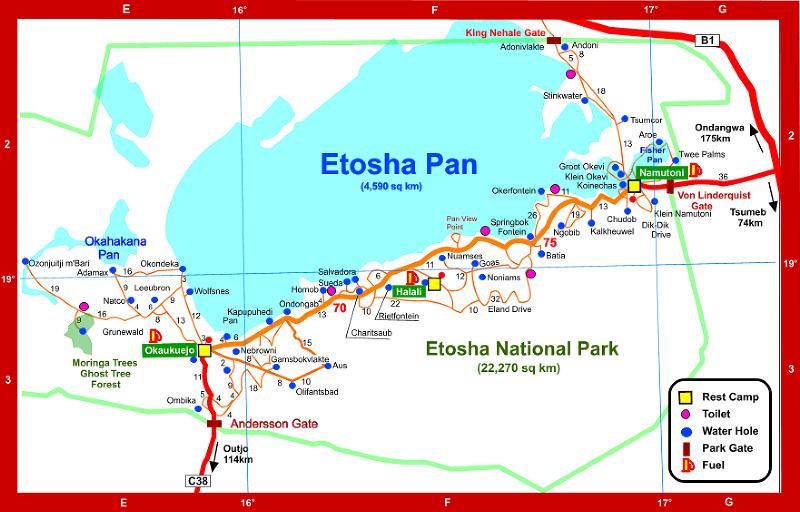
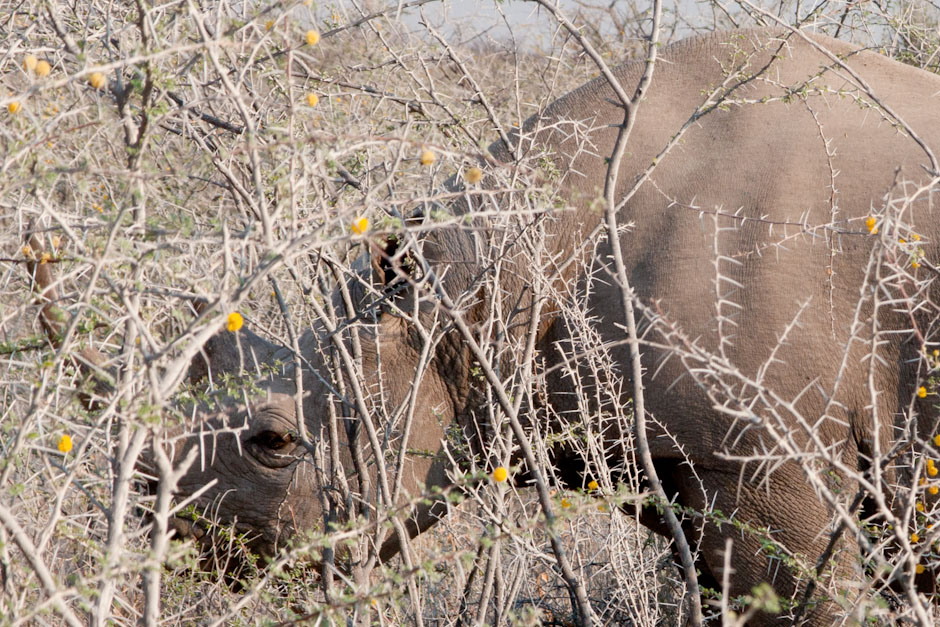
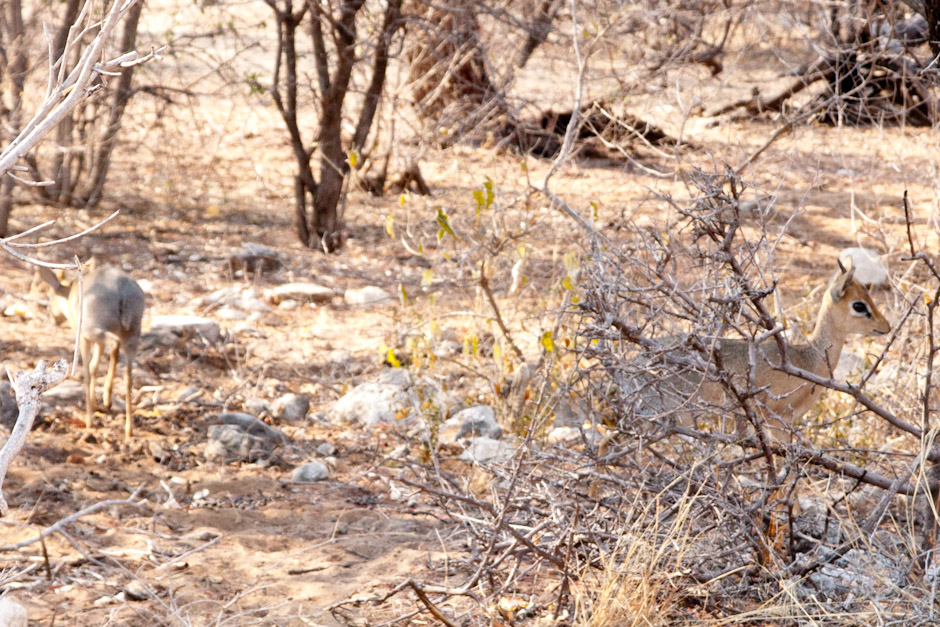
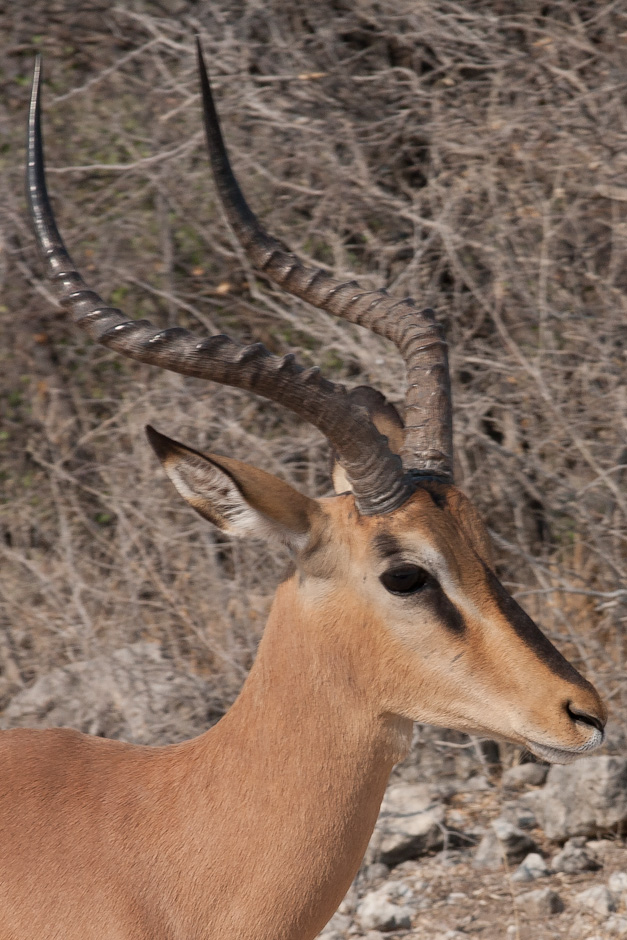
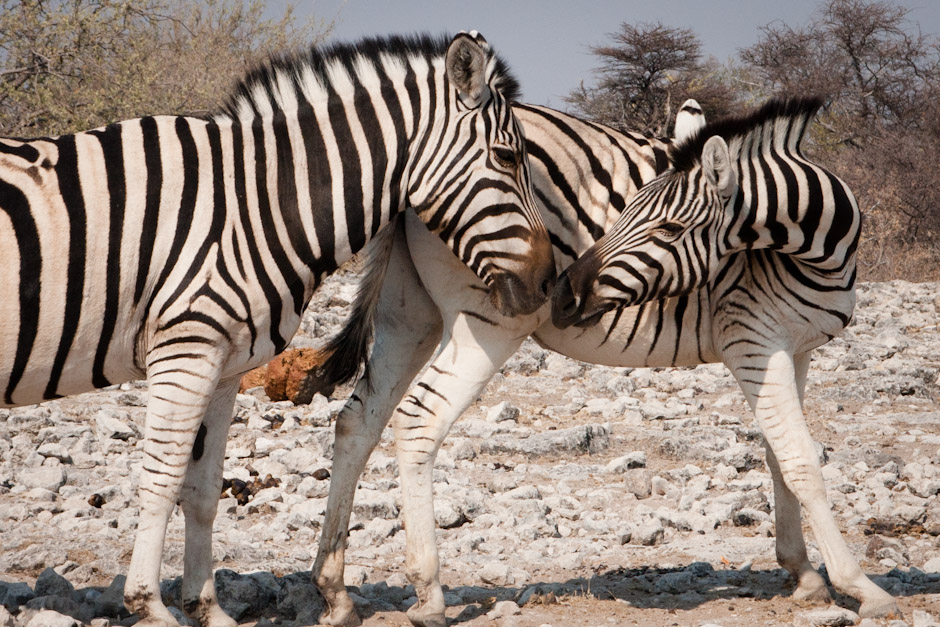
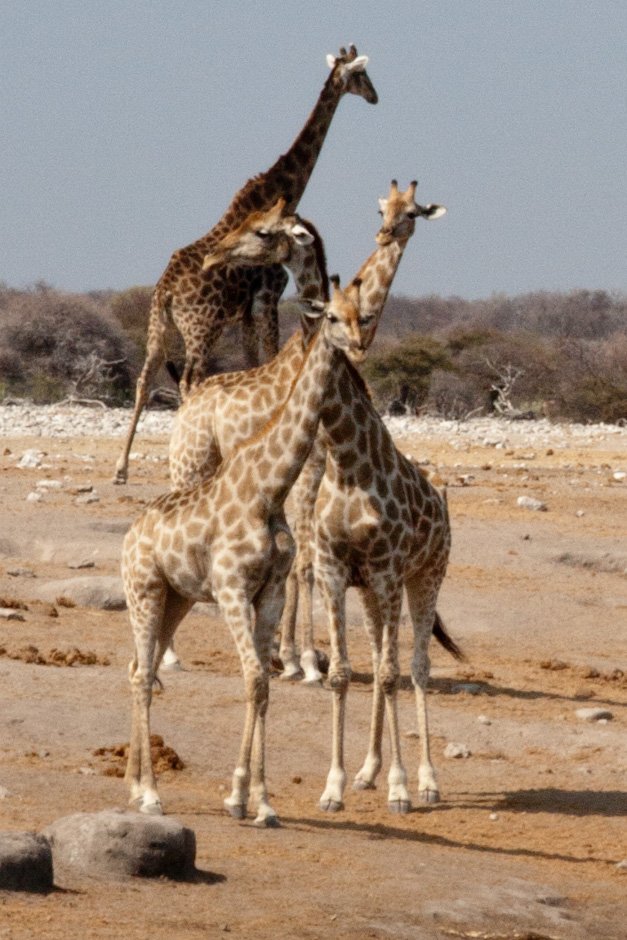
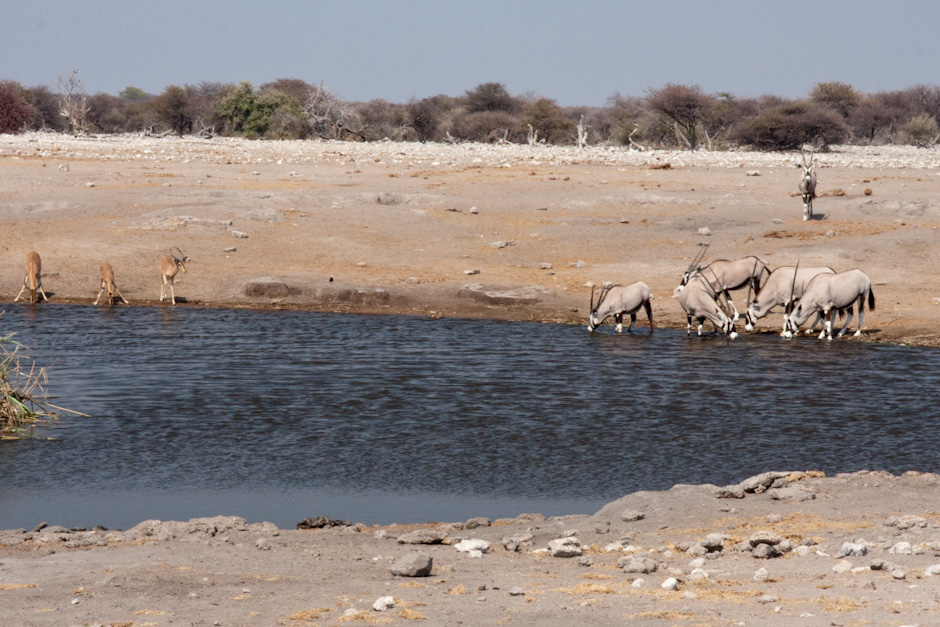
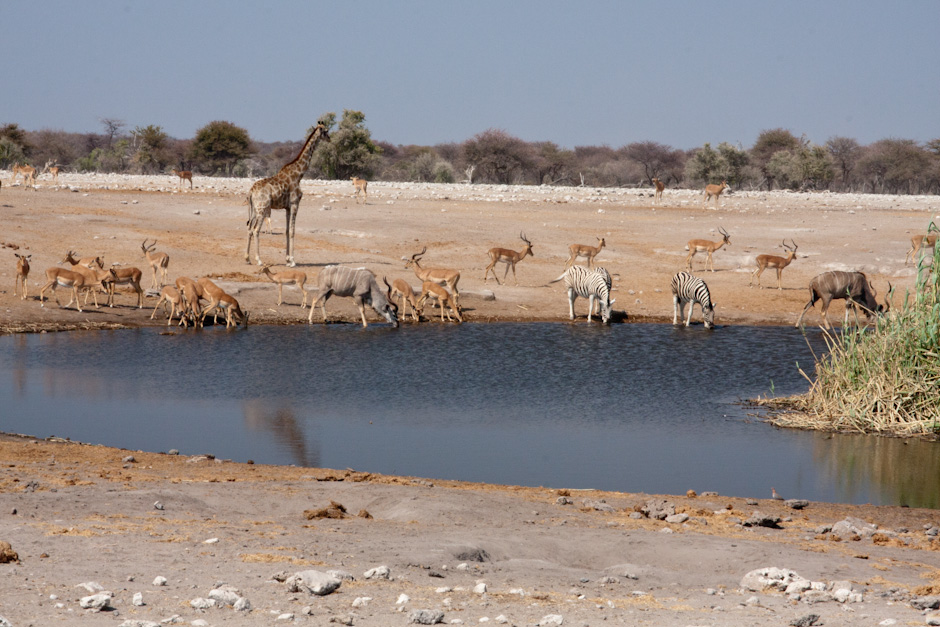
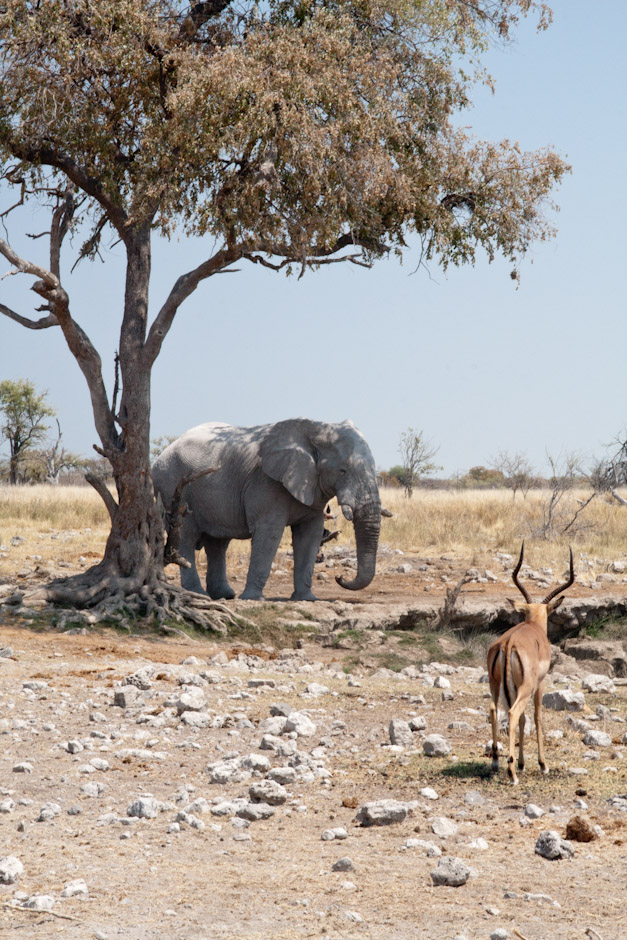
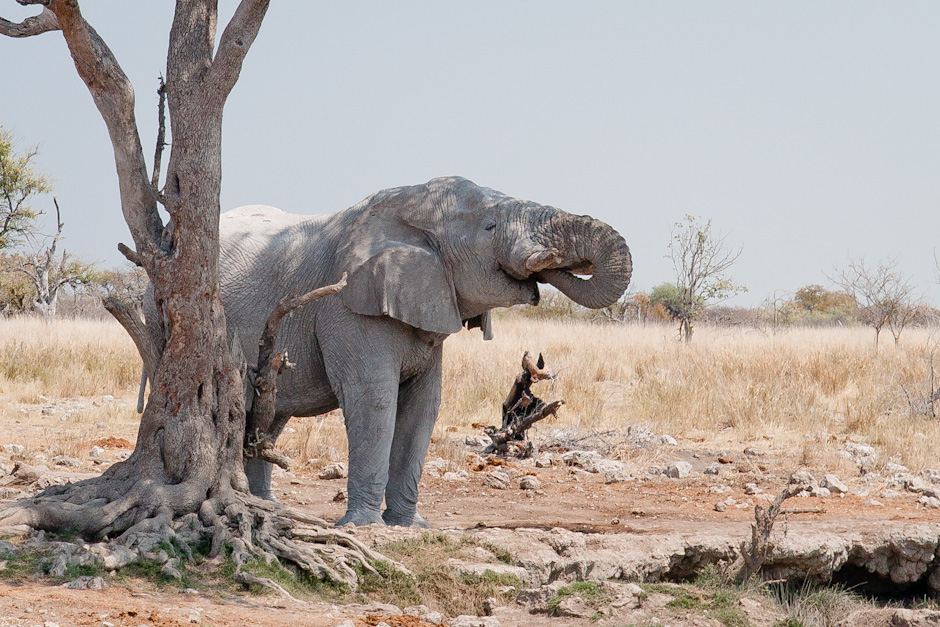
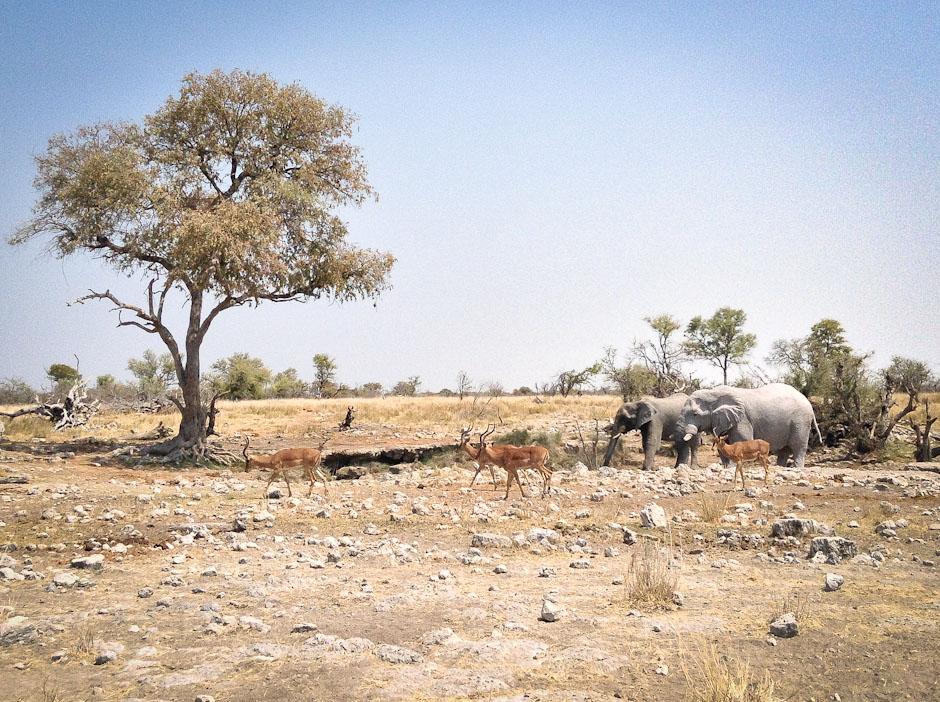
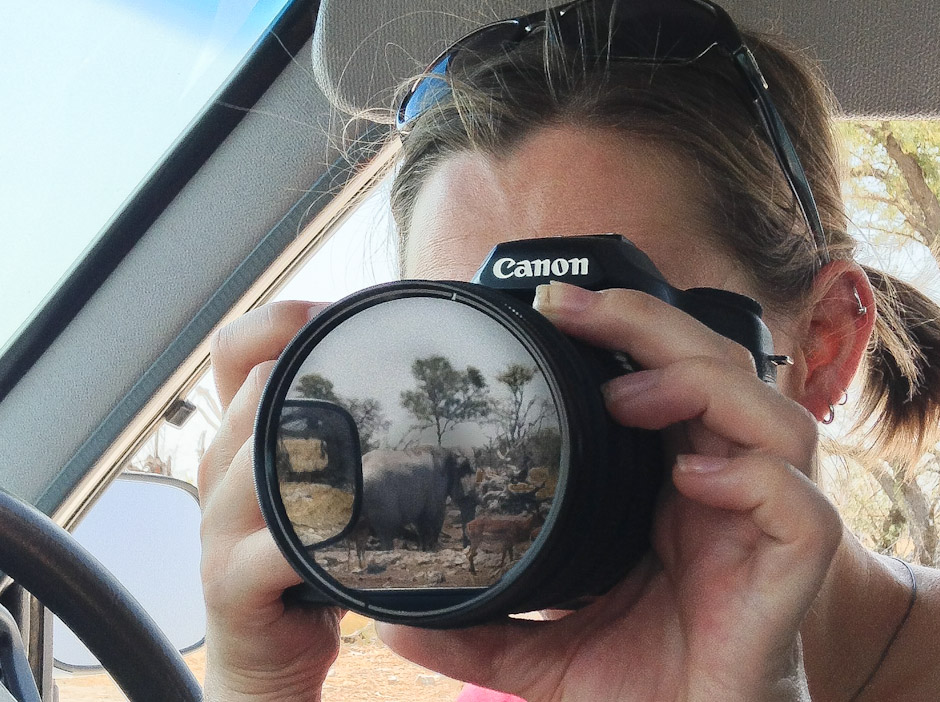
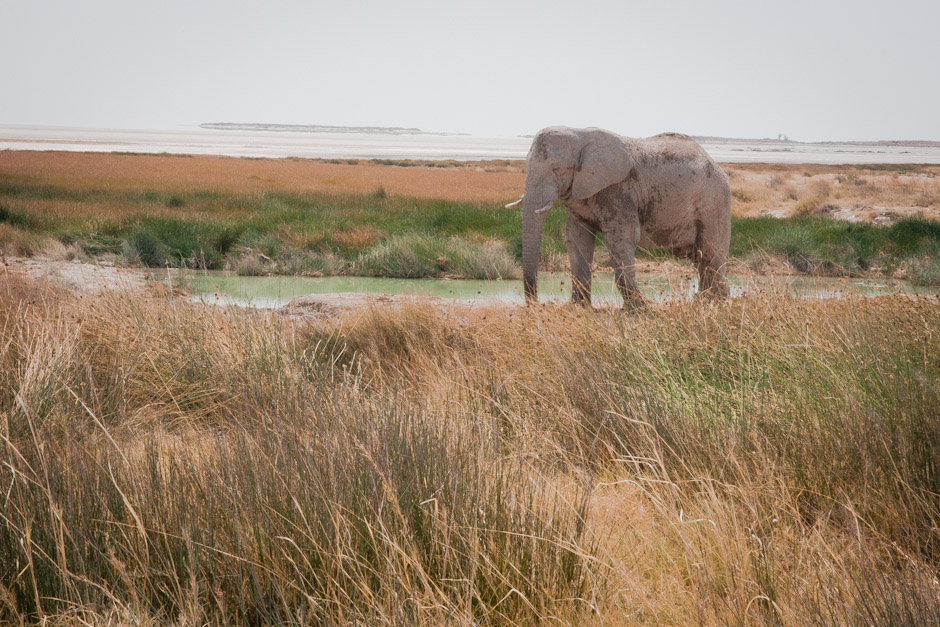
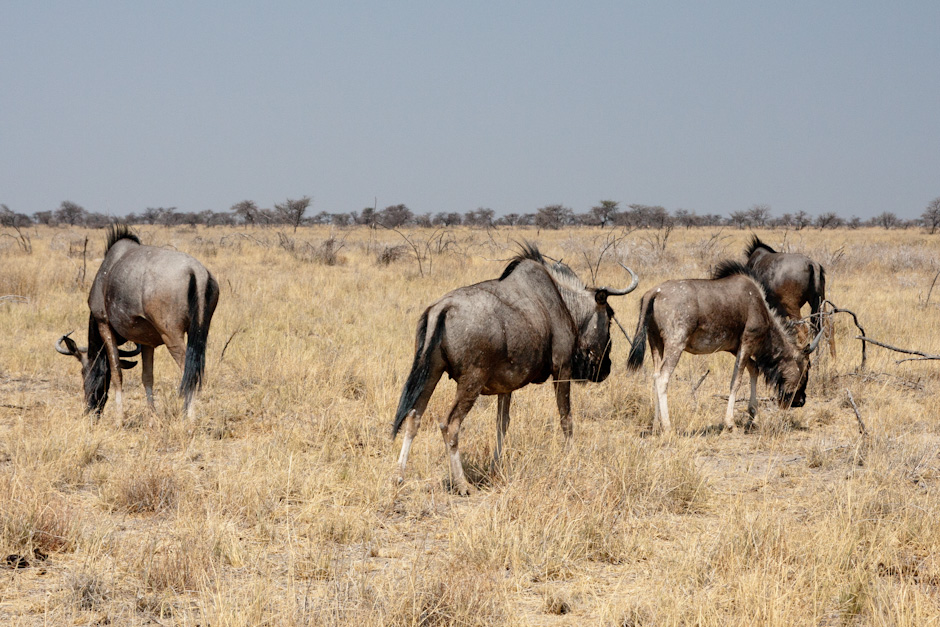
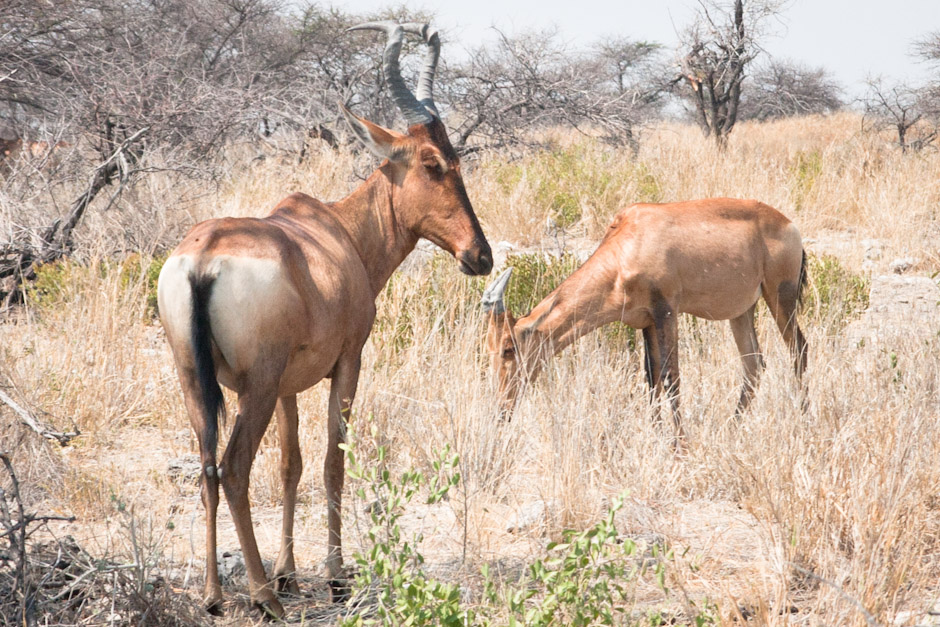
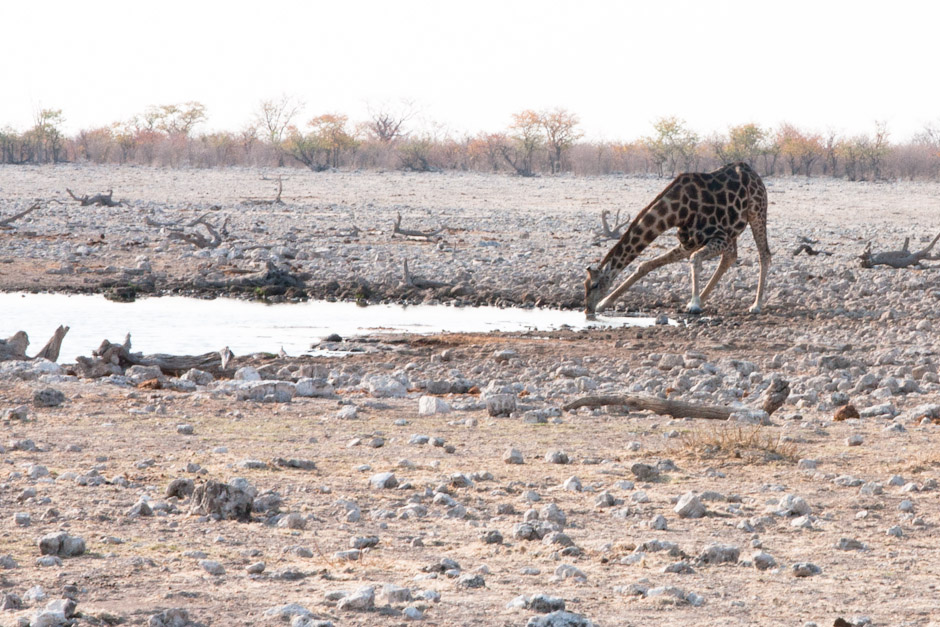
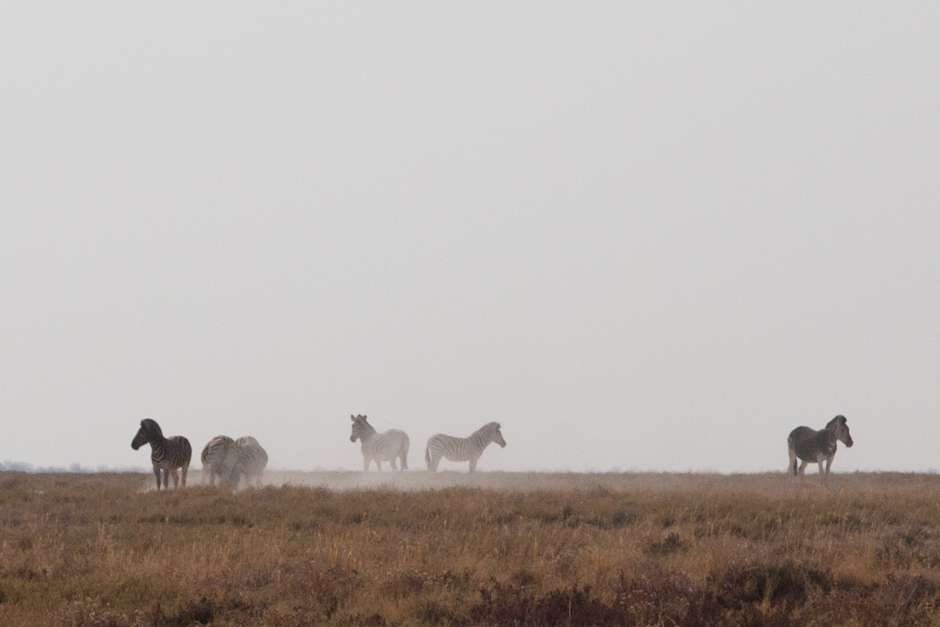
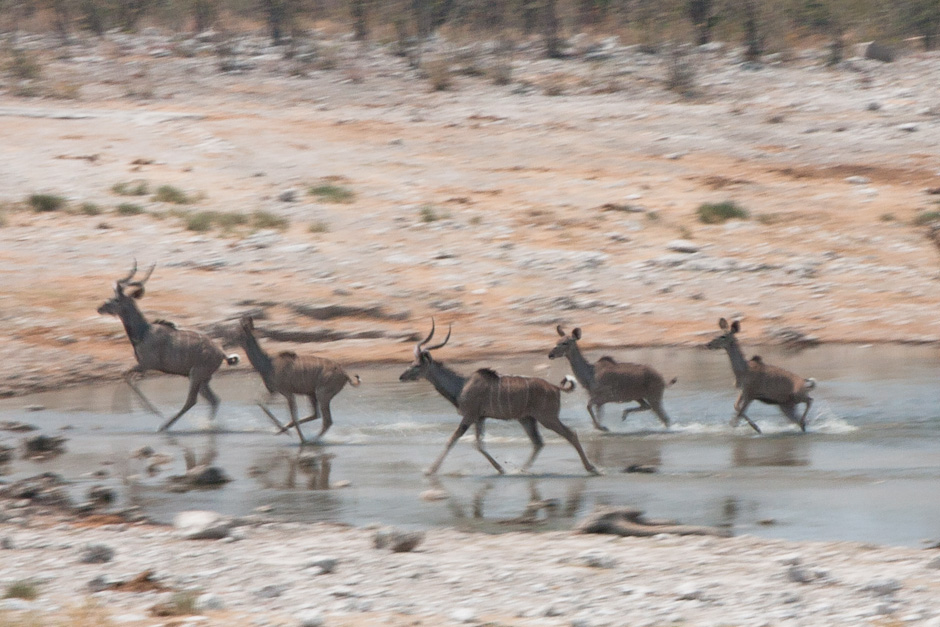
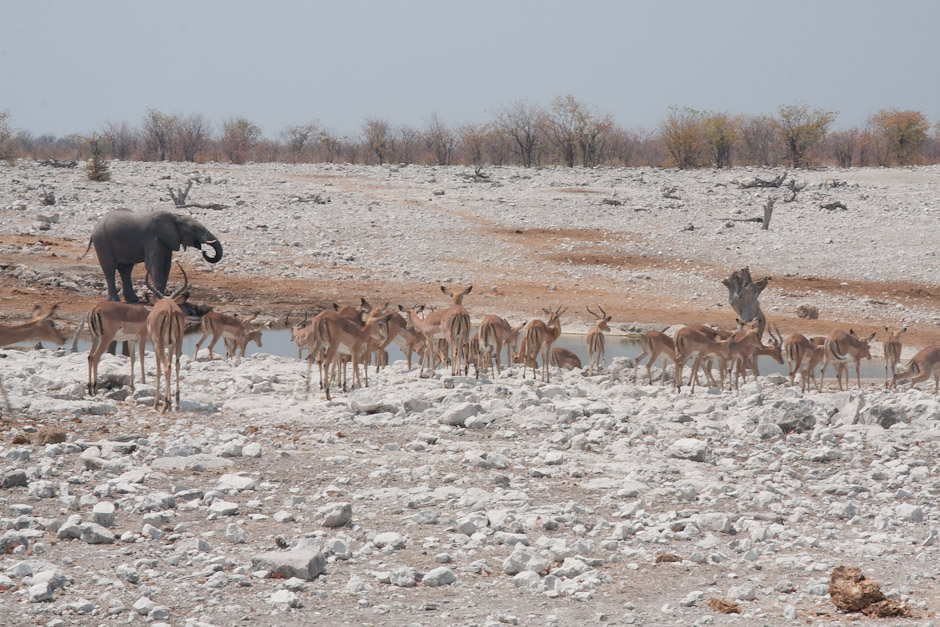
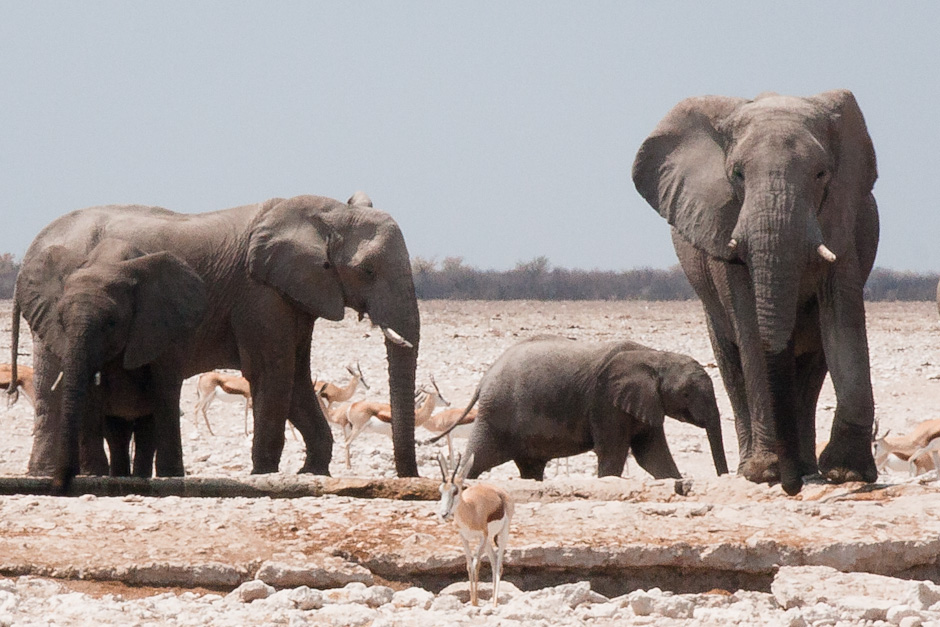
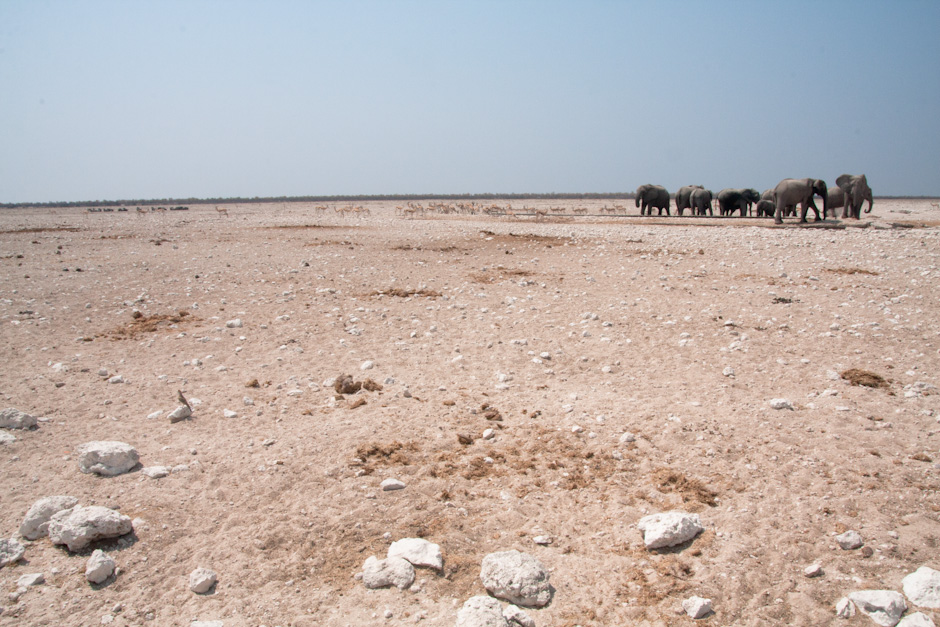
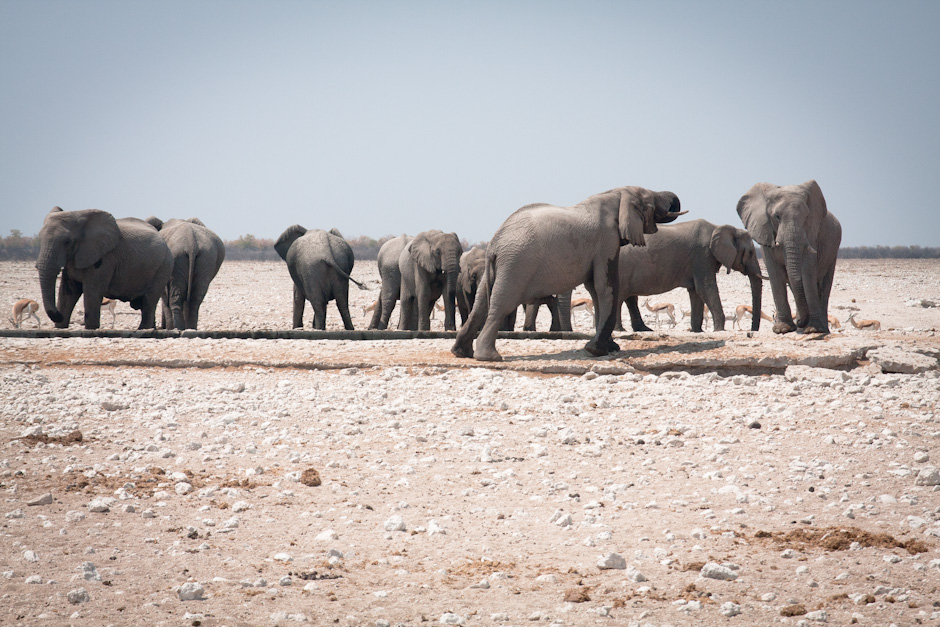
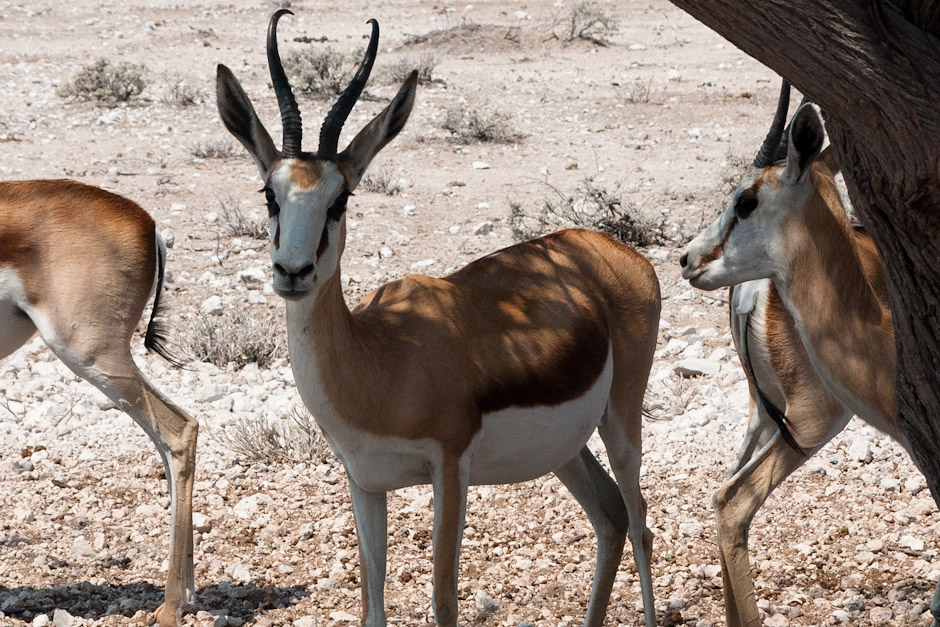
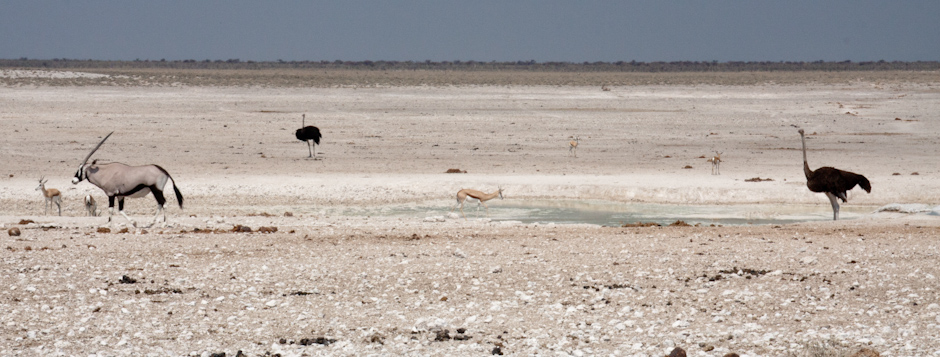
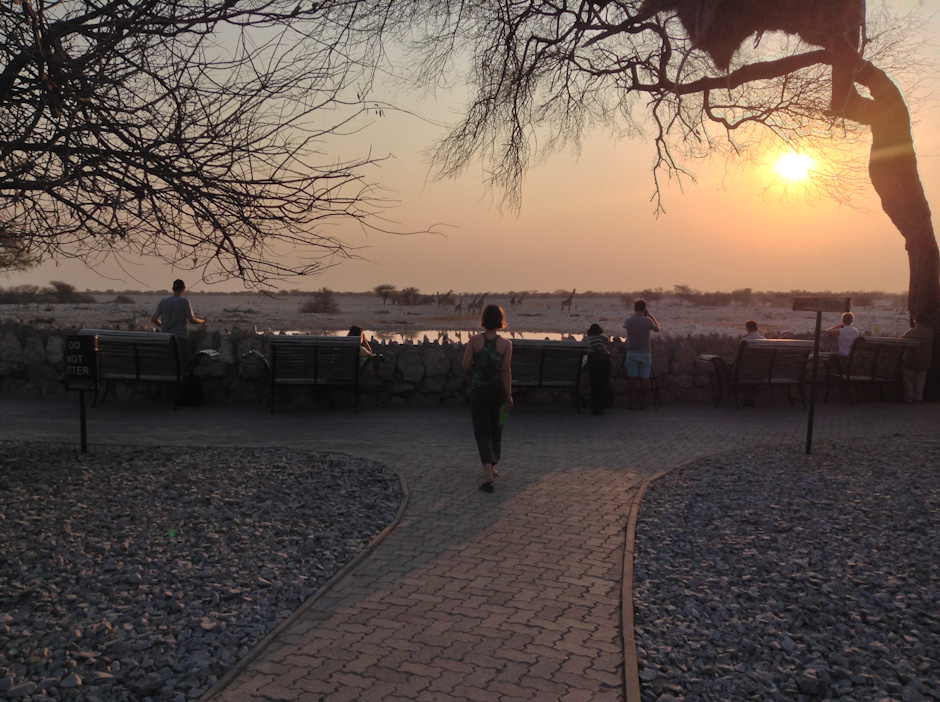
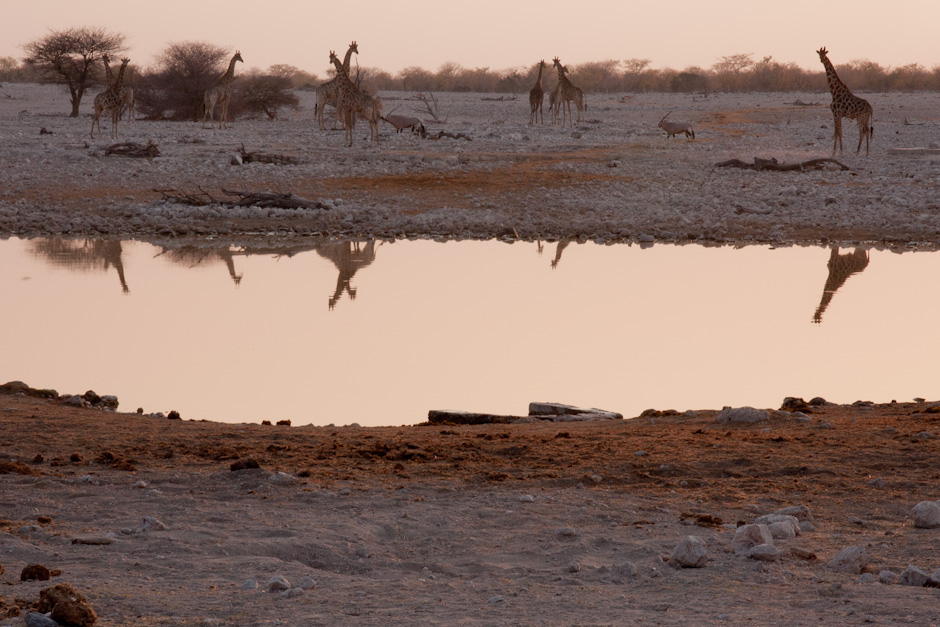
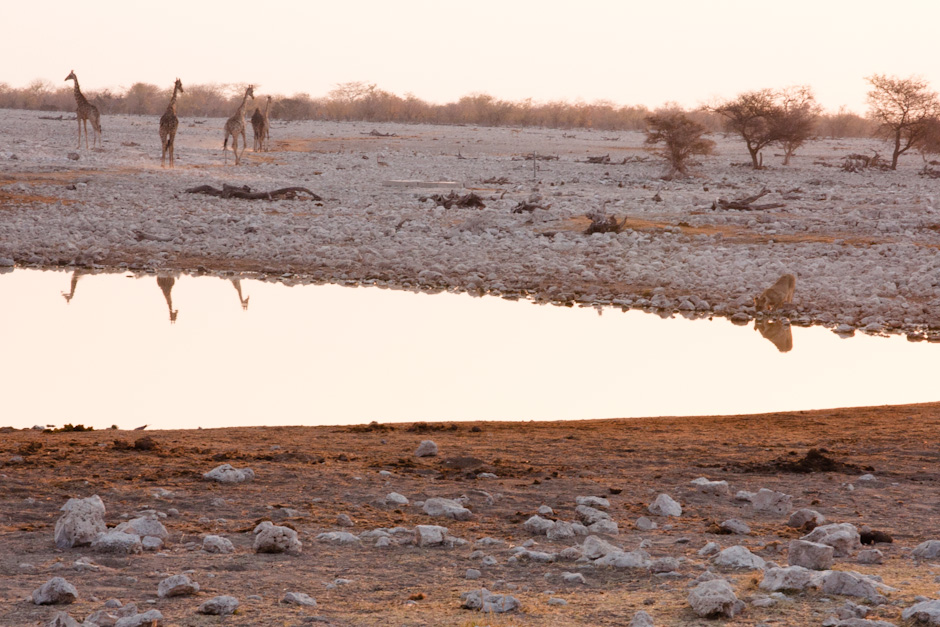
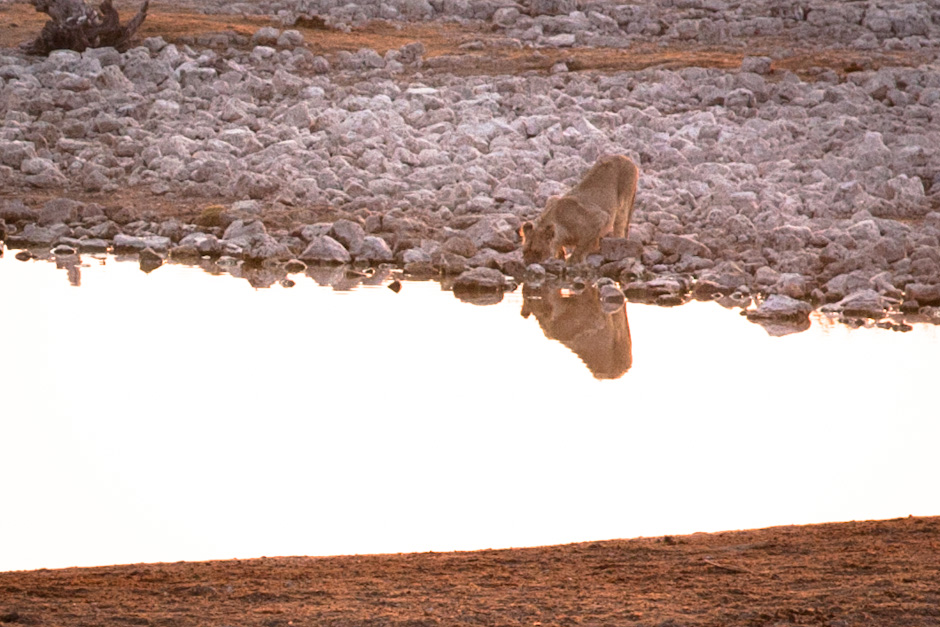
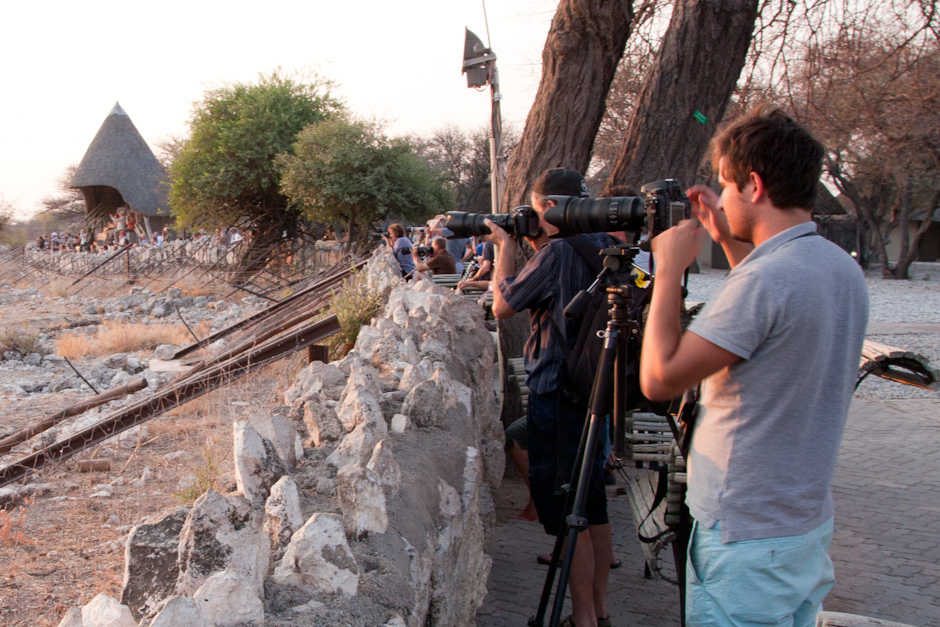
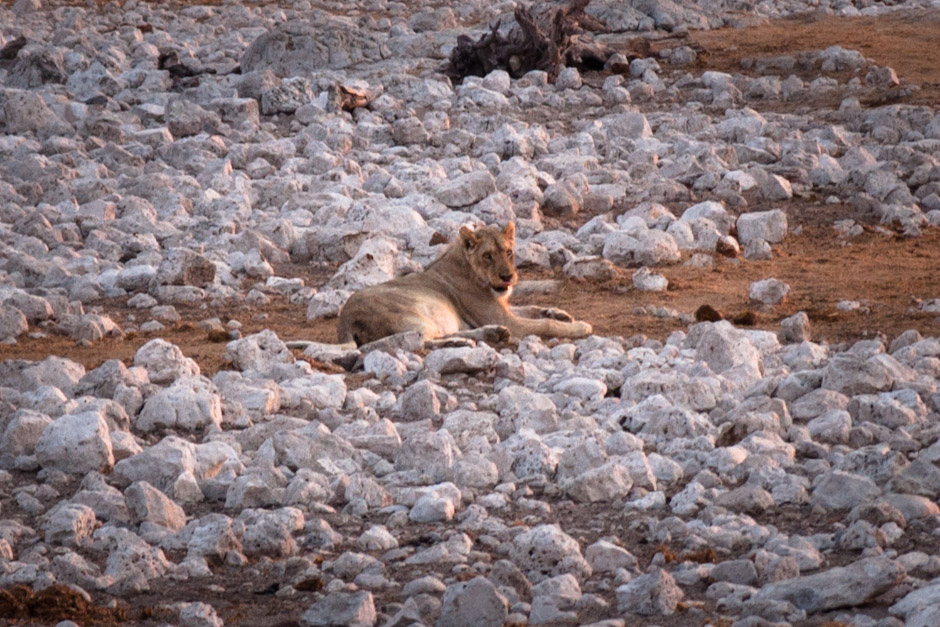
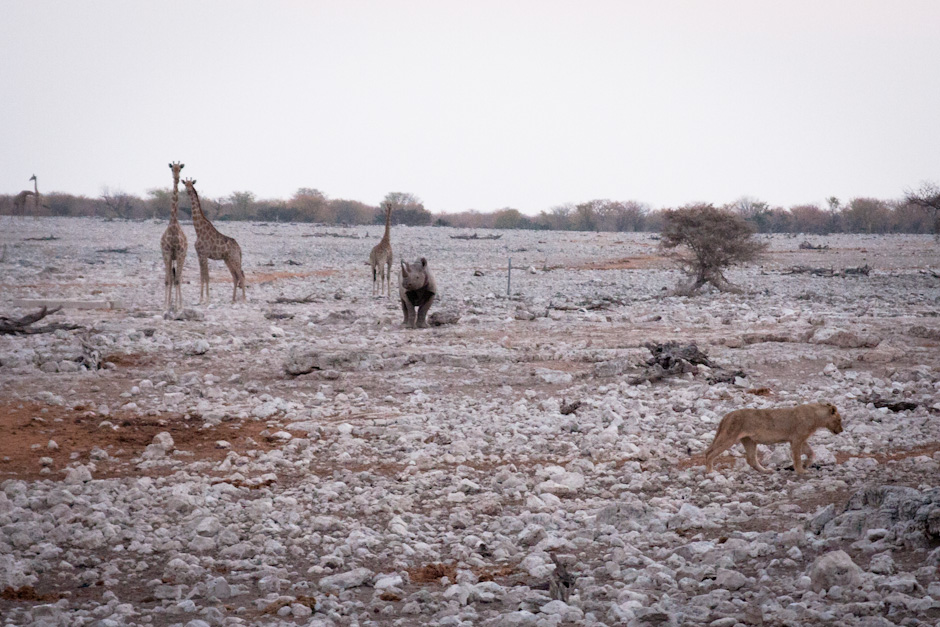
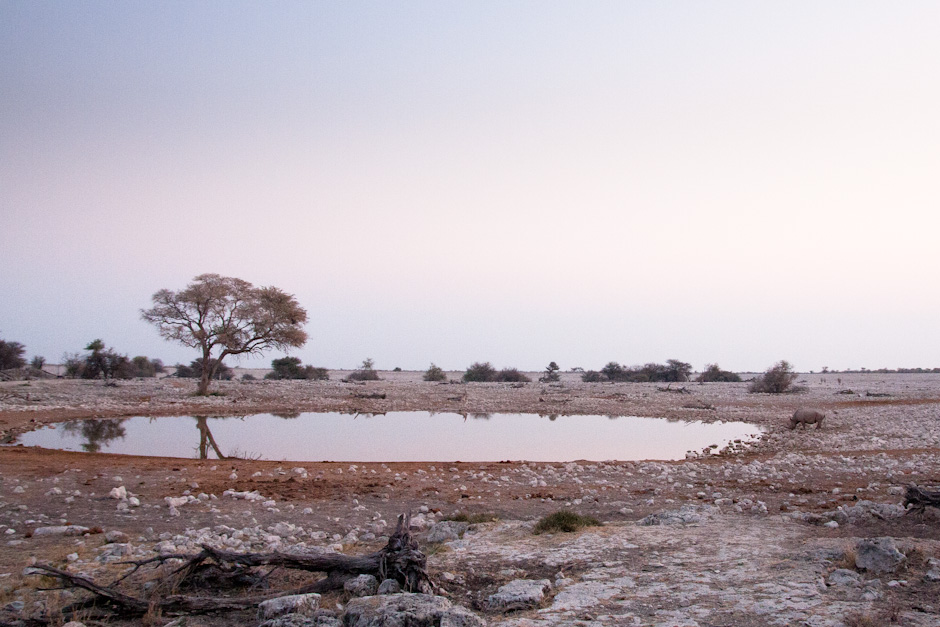
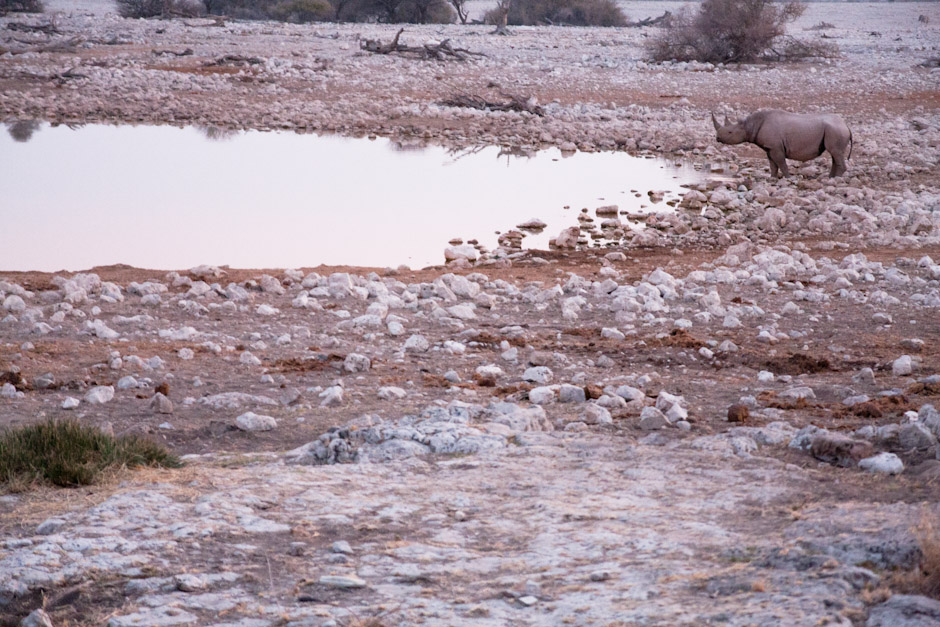
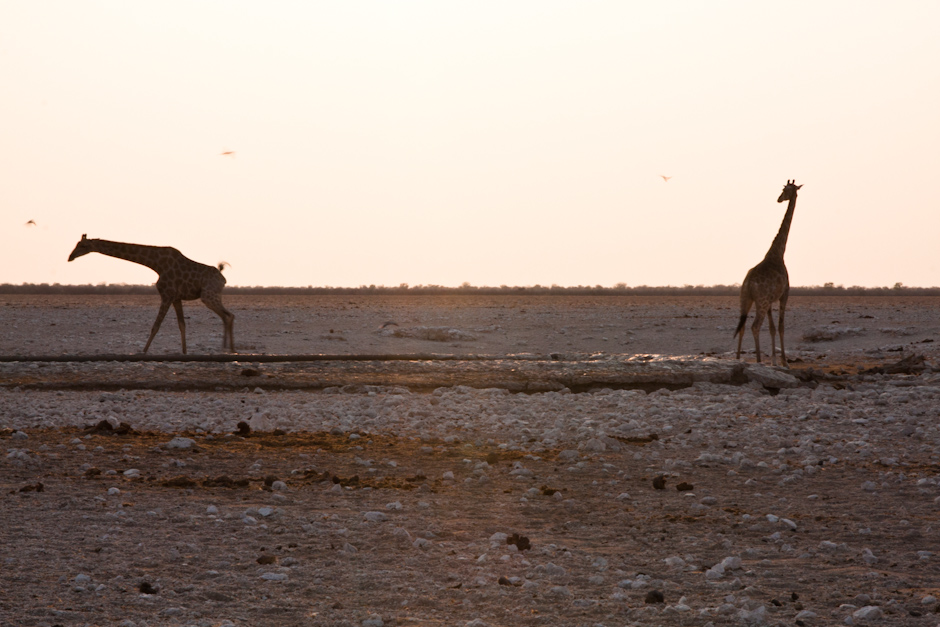
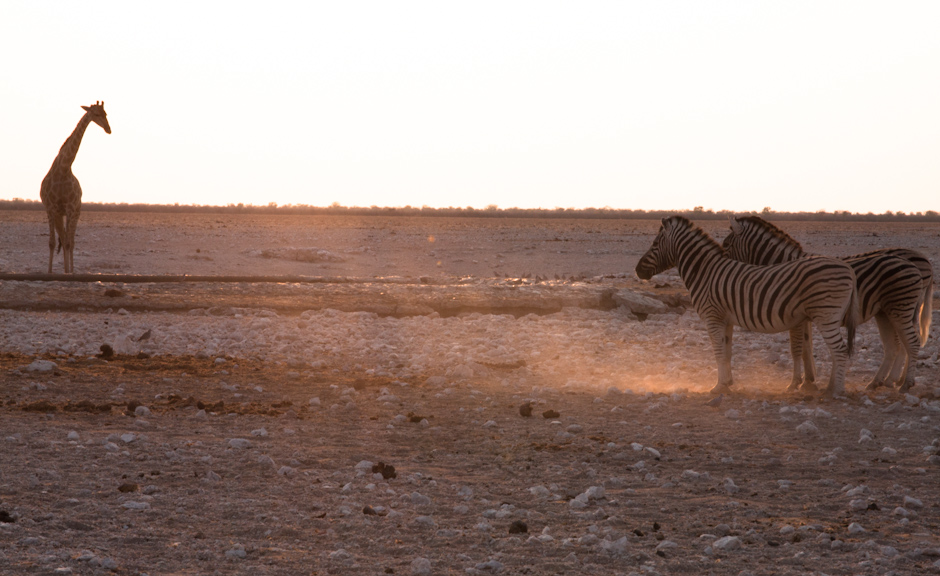
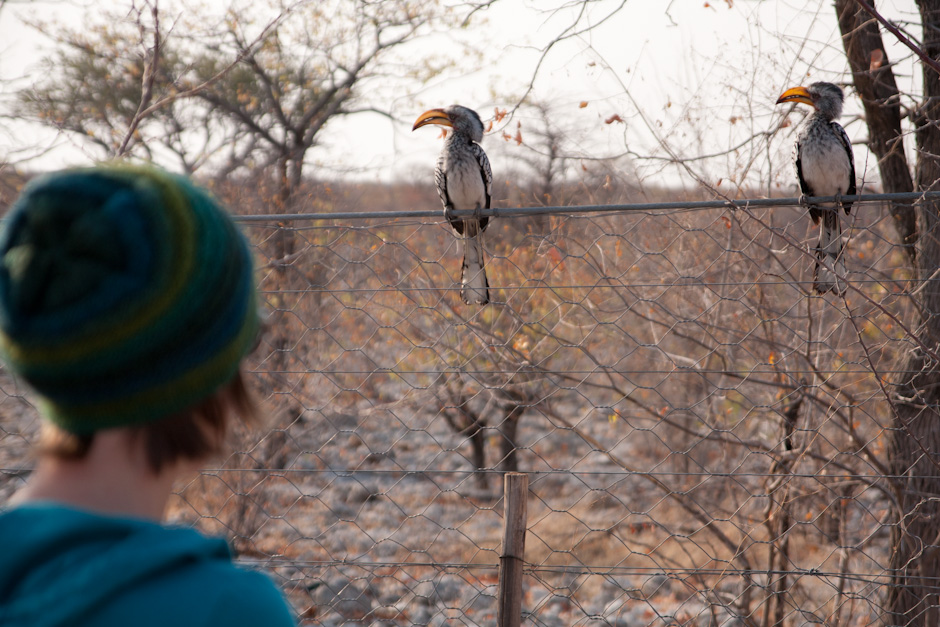
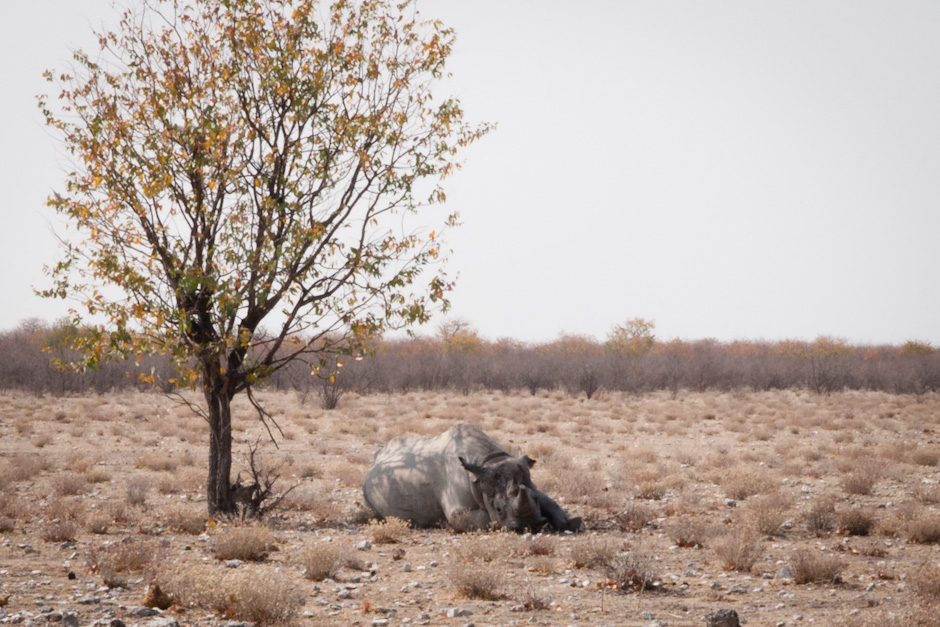
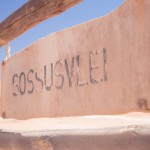
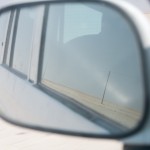
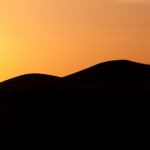
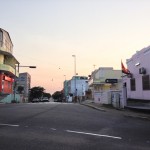
Thanks for sharing these pix man… It was like I was right there with you.
🙂 thanks for checking ’em out / keeping in touch, Jeff.
These pictures are amazing! Thank you so much for sharing your adventure!!
holy crow those are amazing. seriously? wow. so glad to see it all through your pics!
amazing. sounds like this makes all the challenges in Angola worthwhile. I’ve got to get there someday!
Pingback: Namibia in Photos Part 2: Scenes from the road | Crab Sandwich
Animals..wild and at home-with you and Kelli peeking carefully, silently. You would pay biggo bucks at one of the reserves to see this..and even then no promises that the wild things would show.
Well done. Fun for me to revisit.
Thanks,
Yur loving mutti
Pingback: Namibia in Photos Part 3: Sossusvlei | Crab Sandwich